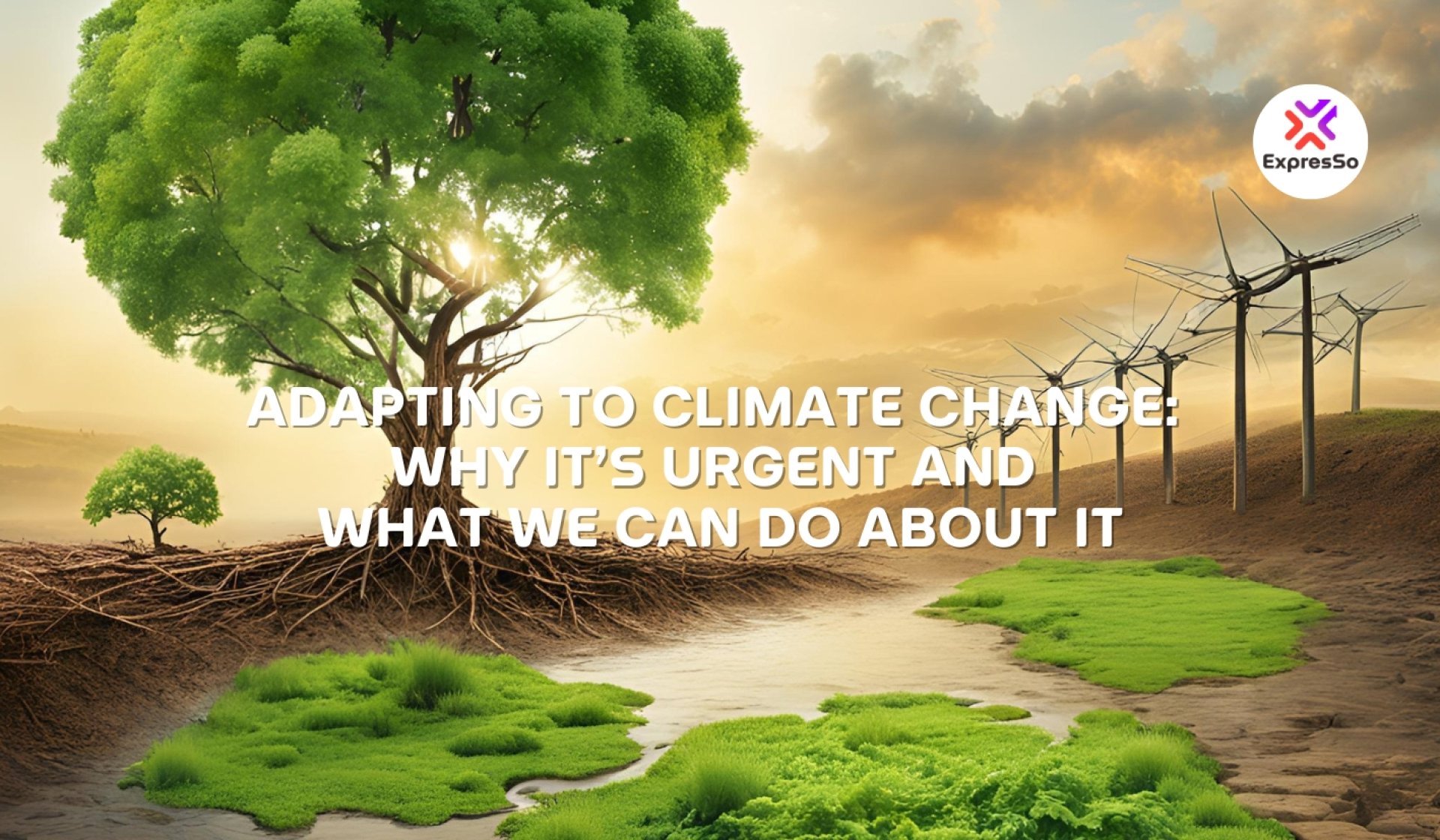Adapting to Climate Change: Urgency and Action

But what exactly does adaptation mean? And why is it so urgent?
What is Climate Change Adaptation?
Climate change adaptation refers to the actions we take to reduce the negative impacts of climate change and make societies more resilient. This includes efforts to protect communities, infrastructure, and ecosystems from the effects of climate change, whether it's through building stronger flood defenses, improving water storage and management, or planting more drought-resistant crops.
Adaptation needs to happen at all levels from local communities to national governments. At the local level, rural communities play a critical role in implementing climate-smart practices, such as regenerative agriculture and improved water management. On a larger scale, governments must focus on large-scale adaptation measures, such as strengthening infrastructure, relocating vulnerable populations, and enhancing early warning systems.
Why is Adaptation So Urgent?
Scientific studies show that the Earth is already about 1.1°C warmer than it was in the 1800s. This warming is driving more frequent and intense weather extremes, and without significant action, temperatures could rise by 2.5 to 2.9°C by the end of the century. This would lead to even more devastating impacts, making it harder and more expensive to adapt.
The urgency of adaptation is particularly pronounced for developing countries, which are already feeling the impacts of climate change. These nations often have limited resources and infrastructure, making them especially vulnerable to extreme weather events like floods, droughts, and storms.
Additionally, marginalized communities including women, children, Indigenous Peoples, and refugees are often the hardest hit by climate change. These groups tend to face disproportionate risks due to social, economic, and cultural factors. For them, adaptation is not just a matter of survival, but of safeguarding their rights, livelihoods, and futures.
Challenges in Climate Adaptation
While adaptation is crucial, it comes with several significant challenges:
- Finance Adaptation efforts require substantial investment, especially in developing countries. Unfortunately, the financial resources currently available are far from sufficient to meet the needs of vulnerable populations. In fact, adaptation finance needs are estimated to be 10 to 18 times larger than what is available from public sources.
- Knowledge and Data Gaps Accurate, localized climate data is essential for effective adaptation planning. Many countries, particularly those in the Global South, lack access to such data, making it difficult for governments, businesses, and communities to make informed decisions on how to adapt.
- Institutional and Governance Constraints In many countries, there are challenges in coordinating efforts across sectors and levels of government. Additionally, there is often a lack of expertise in climate-risk informed planning and investments, which hinders effective adaptation.
Global Goals on Adaptation
The Global Goal on Adaptation (GGA) is a key component of the Paris Agreement, which commits countries to enhance resilience and reduce vulnerability to climate change. The GGA encourages both developed and developing countries to prioritize adaptation alongside efforts to reduce emissions.
At COP28, leaders made important strides by adopting the UAE Framework for Global Climate Resilience. This includes time-bound targets for adaptation across sectors such as water, agriculture, and livelihoods, as well as a roadmap to scale up finance and innovation. The goal is to double adaptation finance by 2025 and mobilize both public and private sector investments.
However, there is still much work to be done to ensure that the adaptation efforts are scaled up and effectively implemented, especially in vulnerable countries.
National Adaptation Plans: A Path Forward
One of the most important tools for guiding climate adaptation is the National Adaptation Plan (NAP). These plans outline the long-term strategies that countries will use to adapt to climate change, focusing on key sectors such as food security, water, and infrastructure.
NAPs are essential for:
- Prioritizing adaptation actions
- Integrating climate considerations into national development plans
- Mobilizing finance and directing investments to the most vulnerable areas
Global Examples of Climate Adaptation
Around the world, countries are already implementing innovative solutions to adapt to climate change:
- Tuvalu, a small island nation, is using sand to reclaim land to protect against sea-level rise and storm surges.
- Cuba and Colombia are leading the way with nature-based solutions, restoring ecosystems like mangroves and wetlands to protect against floods and droughts.
- Malawi and Pakistan are modernizing their climate data systems, providing communities with critical early warning information to protect lives and livelihoods.
These examples show that even countries with limited resources can implement effective adaptation strategies. But for these efforts to scale, international support and finance are essential.
How UNDP Supports Climate Adaptation
The United Nations Development Programme (UNDP) is at the forefront of global climate adaptation efforts. Since 2002, UNDP has worked with governments in over 90 countries to build climate resilience, with projects impacting more than 164 million people worldwide. These efforts include providing climate information systems, climate-smart agricultural practices, and improved access to water.
UNDP's work emphasizes that adaptation is not just about mitigating the impacts of climate change it's about ensuring that communities can thrive in the face of these changes. Their projects are making a real difference by empowering local communities, driving innovation, and creating sustainable solutions.
Conclusion: The Path to Resilience
Adapting to climate change is not optional it's a necessity for protecting the planet and its inhabitants. As global temperatures rise and extreme weather events become more common, the need for adaptation strategies will only grow. While the challenges are significant, the solutions are within reach if we act now.
By prioritizing adaptation, investing in resilient infrastructure, and supporting vulnerable communities, we can create a more sustainable, climate-resilient future for all.
How can we, as individuals and organizations, contribute to climate adaptation?
Reference : climatepromise.undp.org


